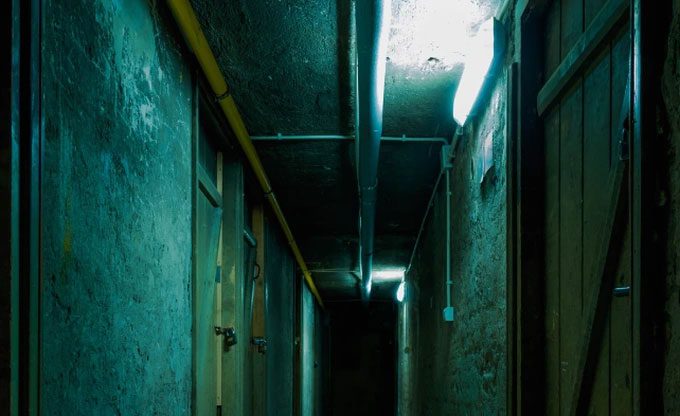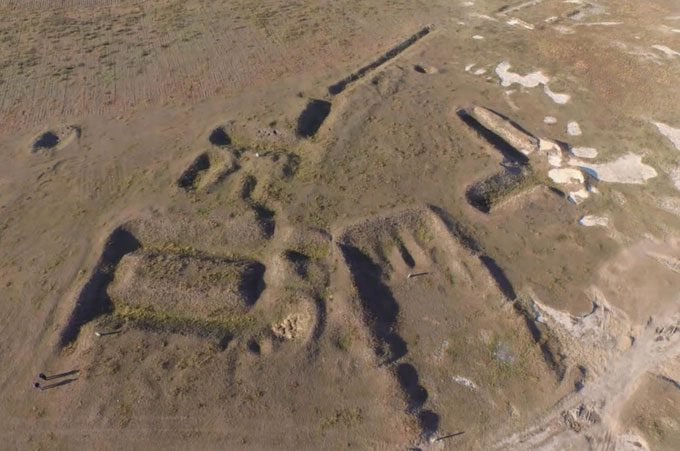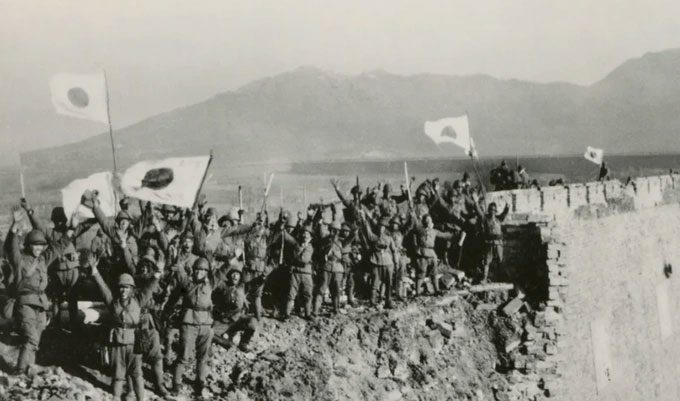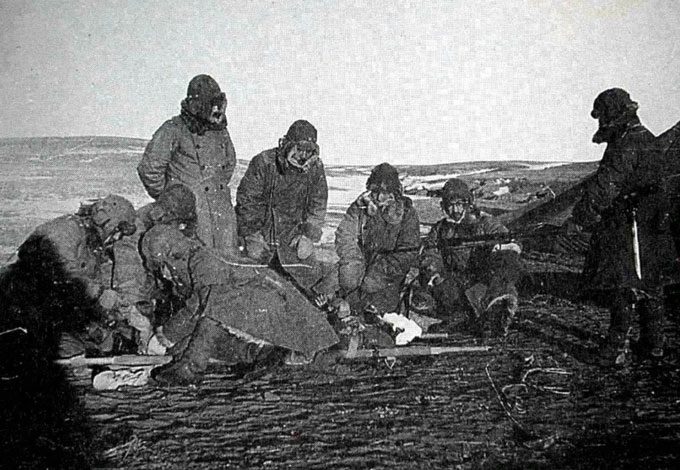Prisoners were taken to a mysterious underground bunker, subsequently becoming subjects for cruel experiments.
Since World War II, mysterious underground research facilities have always instilled fear whenever mentioned. These places are believed to have produced horrifying biological weapon experiments, targeting human subjects. Even today, remnants of these facilities remain scattered, waiting to be discovered.

Unit 731 conducted horrific experiments on humans from 1935 – 1945. (Illustrative image: NDTV).
According to SCMP, archaeologists have recently uncovered a similar research facility near Anda City in Heilongjiang Province, northeastern China. This site was known to be the largest and most frequent testing ground of the infamous Unit 731, under the command of the Imperial Japanese Army.
Evidence of War Crimes

Aerial view of the Anda testing ground, where an underground biological weapons research facility used by the Japanese Army during World War II was found. (Photo: Heilongjiang Provincial Institute of Cultural Relics and Archaeology).
Historical records indicate that between 1935 and 1945, Unit 731 conducted several brutal experiments on humans, including infecting prisoners with lethal diseases and testing new generation biological weapons.
Declassified documents later revealed that the results of these experiments were shared with the U.S. government in exchange for immunity from war crimes, eventually leading to their use at the U.S. Army research center at Fort Detrick, aiding in the development of biological weapons during the Cold War.
The entire research facility was constructed in 1941 and was overseen by the Bureau of Bacterial Warfare. It was the largest testing site, equipped with the most advanced technology of its time, frequently used by Unit 731.
“It was a cluster of bunkers approximately 1.5 meters above ground, with a U-shaped structure, about 33 meters long and 20.6 meters wide,” the documents describe. “The main activities here included conducting cruel experiments on live humans and detaining them in special prisons.”
According to the documents, the entire facility was heavily guarded, surrounded by barbed wire fences. Above ground structures included a runway, warehouses, barracks, wells, and bombing test sites.
Below ground were laboratories, holding cells, observation rooms, and dissection rooms… all built robustly to protect against air raids. Very few individuals were allowed entry into the research area to maintain secrecy for the project.

Japanese soldiers celebrating after capturing Nanjing, China, in December 1937. (Photo: Reuters).
The underground facility’s structure included a main room measuring 5 meters long and 3.8 meters wide facing northeast, and a circular room with a diameter of 3 meters facing southeast.
Archaeologists believe these were the laboratories where the atrocities occurred. Here, human subjects were brought in for observation, subsequently dissected when they were infected or exposed to chemical agents.
Horrific Experiments on Prisoners
Sakaki Hayao, a former commander of Unit 731, described one of the “extremely brutal” experiments conducted just months before Japan’s surrender during his testimony in court in 1956.
Hayao recounted witnessing prisoners tied to wooden posts before being exposed to bombs filled with anthrax bacteria, either dropped from planes or detonated at close range. “I realized that this was an incredibly cruel act,” Hayao confessed.
Another shocking revelation indicated that the subjects of the experiments included not only war prisoners but also civilians, involving men, women, children, and even infants.

An image released in 2002 showing Unit 731 of the Japanese Empire conducting frostbite experiments on victims in Heilongjiang Province, China, during World War II. (Photo: Reuters).
Documented experiments included the dissection of live subjects, testing frostbite on victims, and infecting victims with lethal diseases such as syphilis, anthrax, plague, cholera, and typhoid fever…
The legacy of these experiments was partially used to develop biological warfare at Fort Detrick in Maryland, USA. Once revealed, the entire affair sparked public outrage.
It is known that the site was destroyed by Unit 731 in August 1945, along with many other facilities, to eliminate evidence of the crimes they committed. “Most of the structures above ground were destroyed, except for the runway,” archaeologists wrote in their report.
They also suggested that much work remains before fully assessing the extent and severity of the experiments conducted at the facility.
According to a report published in a leading Chinese archaeology journal, the discovery of the underground laboratory may provide further evidence extending the list of war crimes committed by the infamous Unit 731.


















































